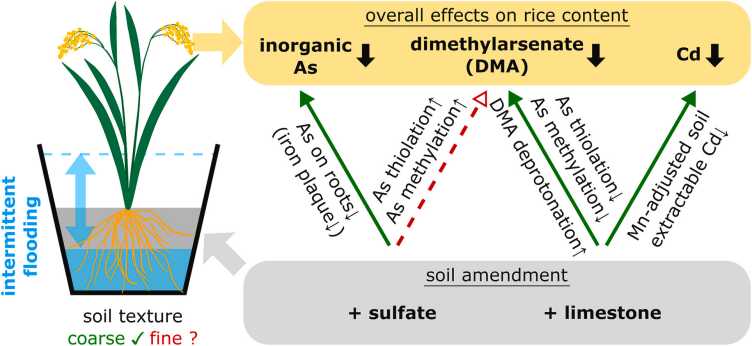New study explores how sulfate and limestone amendment of intermittently flooded soil affects arsenic and cadmium content of rice
The study shows that combined sulfate and limestone amendment of intermittently flooded rice growing soil is an effective treatment to decrease the amount of both arsenic and cadmium that is taken up by rice. The findings have been released in an article that was published in the journal Environmental Pollution.

Simultaneously decreasing arsenic and cadmium in rice by soil sulfate and limestone amendment under intermittent flooding
Water management in paddy soils can effectively reduce the soil-to-rice grain transfer of either As or Cd, but not of both elements simultaneously due to the higher mobility of As under reducing and Cd under oxidizing soil conditions. Limestone amendment, the common form of liming, is well known for decreasing Cd accumulation in rice grown on acidic soils. Sulfate amendment was suggested to effectively decrease As accumulation in rice, especially under intermittent soil flooding. To study the unknown effects of combined sulfate and limestone amendment under intermittent flooding for simultaneously decreasing As and Cd in rice, we performed a pot experiment using an acidic sandy loam paddy soil. We also included a clay loam paddy soil to study the role of soil texture in low-As rice production under intermittent flooding. We found that liming not only decreased rice Cd concentrations but also greatly decreased dimethylarsenate (DMA) accumulation in rice. We hypothesize that this is due to suppressed sulfate reduction, As methylation, and As thiolation by liming in the sulfate-amended soil and a higher share of deprotonated DMA at higher pH which is taken up less readily than protonated DMA. Decreased gene abundance of potential soil sulfate-reducers by liming further supported our hypothesis. Combined sulfate and limestone amendment to the acidic sandy loam soil produced rice with 43% lower inorganic As, 72% lower DMA, and 68% lower Cd compared to the control soil without amendment. A tradeoff between soil aeration and water availability was observed for the clay loam soil, suggesting difficulties to decrease As in rice while avoiding plant water stress under intermittent flooding in fine-textured soils. Our results suggest that combining sulfate amendment, liming, and intermittent flooding can help to secure rice safety when the presence of both As and Cd in coarse-textured soils is of concern.
Fang, X., Colina Blanco, A. E., Christl. I., Le Bars, M., Straub, D., Kleindienst, S., Planer-Friedrich, B., Zhao, F.-J., Kappler, A., Kretzschmar, R. (2024) Simultaneously decreasing arsenic and cadmium in rice by soil sulfate and limestone amendment under intermittent flooding. Environ. Poll. 347. 123786
The external page full text is available online.